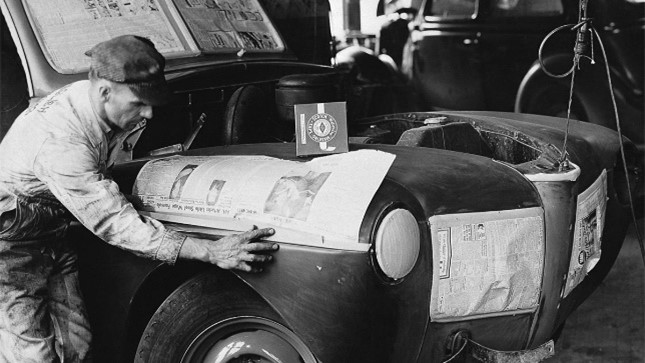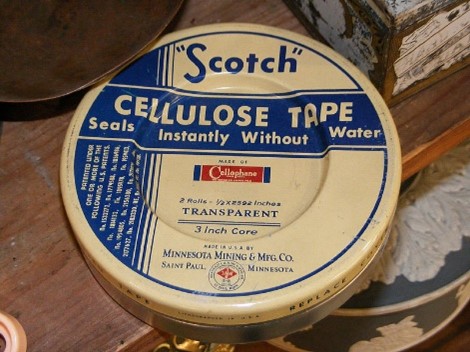An Invention That Stuck Around


In celebration of National Inventors’ Day, we uncovered the story of Richard Drew, the man who created a staple item found in almost every home and workplace: Scotch Tape.
Richard Drew never wanted a desk job. Born in St. Paul Minnesota in 1899, Drew pursued a career as a banjo player before briefly attending the University of Minnesota for mechanical engineering. However, he became dissatisfied with the program and dropped out after 18 months. Drew instead opted to take a correspondence course in machine design and find a local job.

In 1923, Drew joined 3M – which only manufactured sandpaper at the time. Part of his job included delivering and testing sandpaper samples at auto body shops. Multiple times during product testing, Drew observed and overheard painters struggling with and complaining about two-tone paint jobs. Typically, workers painted the car one color before applying a barrier to the painted sections and repainting the second coat. Unfortunately, no barrier worked perfectly. Some failed to prevent paint transfer and others left a sticky residue ruining the paint, leading to a vicious cycle of repainting and frustration.

With little experience and lots of determination, Drew set out to create a solution. Through trial and error, he created a tape with a crepe paper backing and cabinetmaker’s glue adhesive. However, Drew did not use enough adhesive, resulting in poor adhesion to the car. One irritated painter told him, “Take this tape back to those Scotch bosses of yours and tell them to put more adhesive on it!” The Scotch name stuck, and soon after Drew adjusted his adhesion levels, Scotch Masking Tape became a sensation.
Recognizing and rewarding Drew’s ingenuity, 3M promoted him to a lab position to allow him to continue innovating. Now, he faced a new challenge: creating a tape with a clear cellophane backing. The finicky cellophane presented problems for Drew and his team – heat curled it and 3M’s machines tore and split it. Additionally, the adhesive’s amber hue ruined the cellophane’s transparency.

Through immense effort, Drew designed his own machines to gently manufacture the tape and created a clear adhesive. With the tape’s completion, Scotch Cellulose Tape hit the market during the Great Depression.
At a time when most companies struggled, 3M prospered with Drew’s inventions. Through the Depression’s financially challenging times, many consumers opted to repair their broken household items with tape rather than purchase new ones. With various possibilities and fixable solutions the tape provided, Scotch sales skyrocketed and 3M grew and thrived – all thanks to the creativity and innovation of one man.
After over 40 years inventing at 3M, Drew passed away in 1980 with 30 patents to his name. In 2007, the National Inventors Hall of Fame inducted him into its ranks, immortalizing Richard Drew as a world-shaping inventor. The processes he created to invent his new kind of tape in 1925 shaped the processes for developing and adding adhesives to other tapes – including ABI and Ideal’s own product lines. Drew’s tapes continue to help people today and are sure to stick around for a long time.


